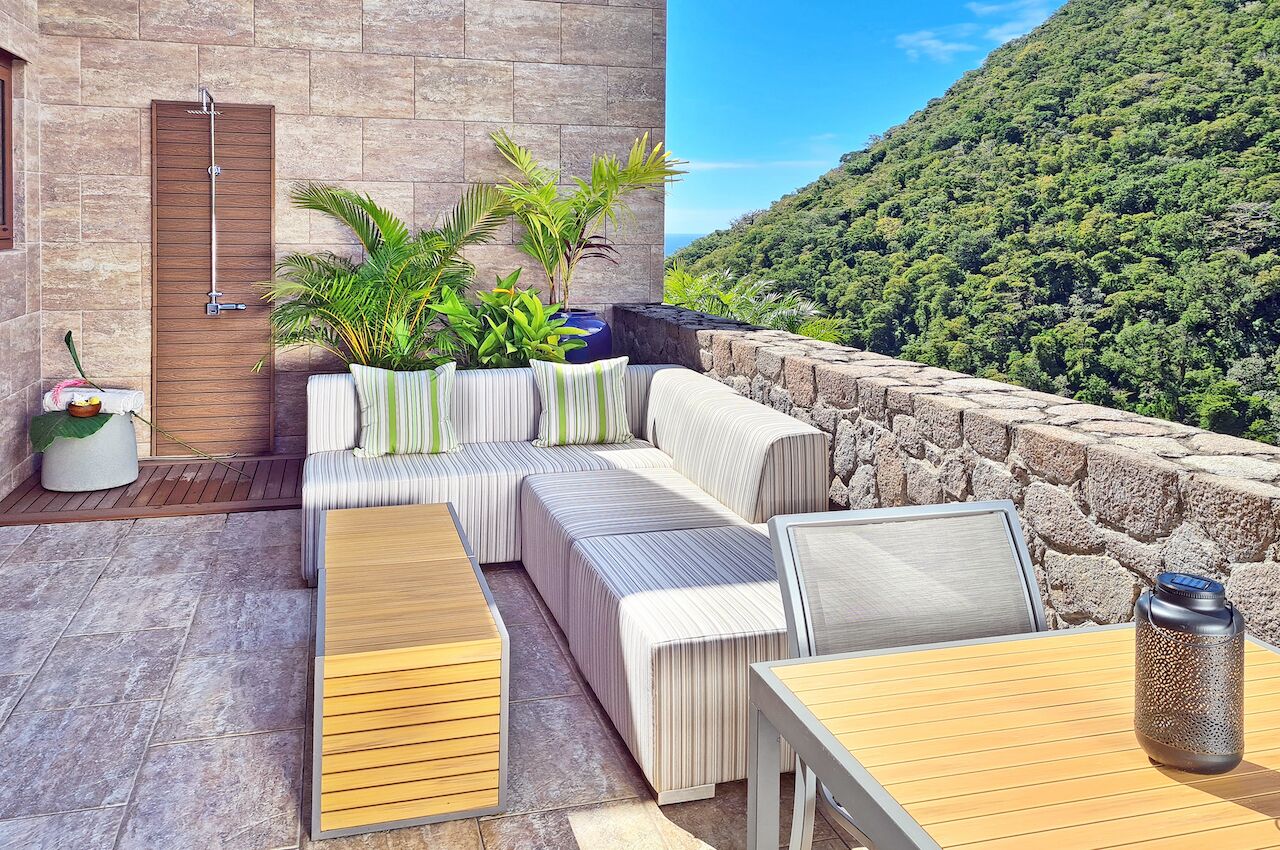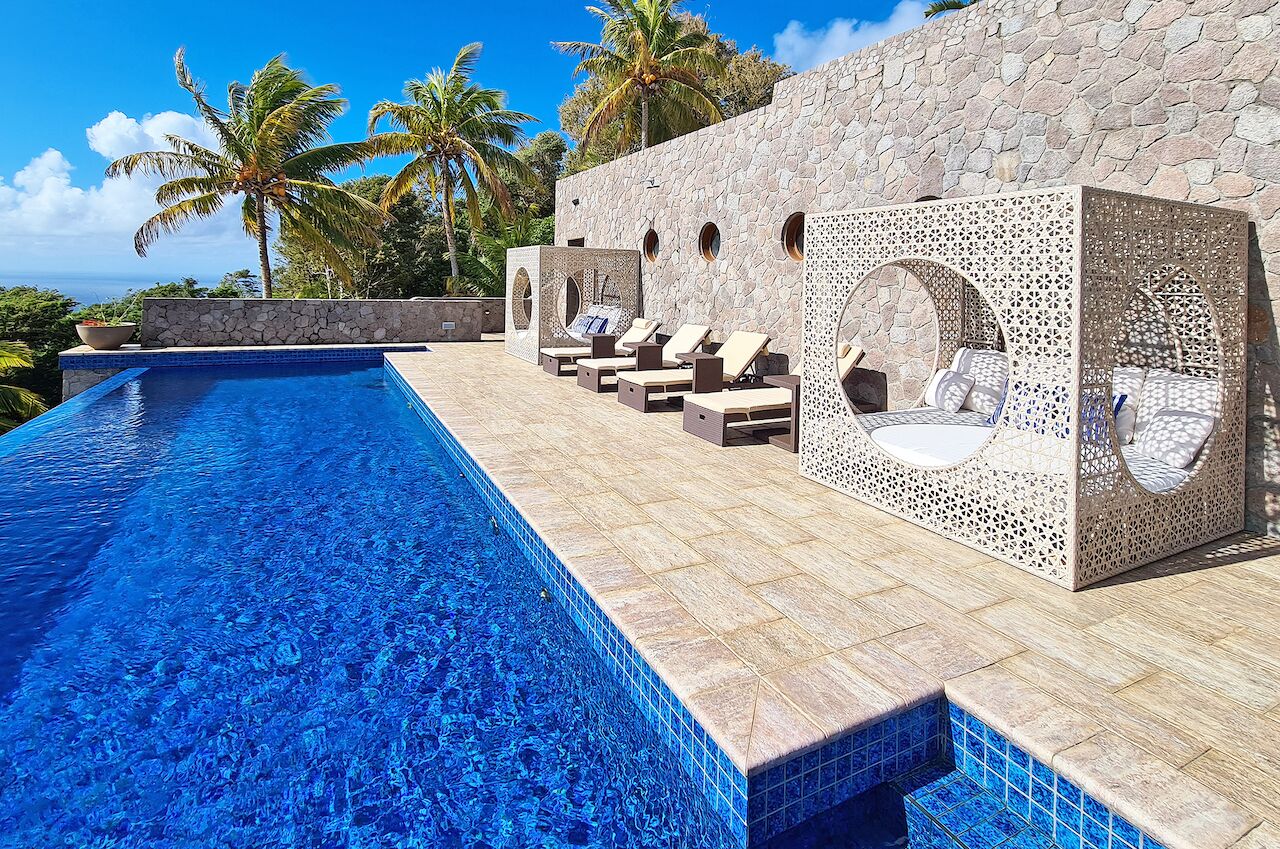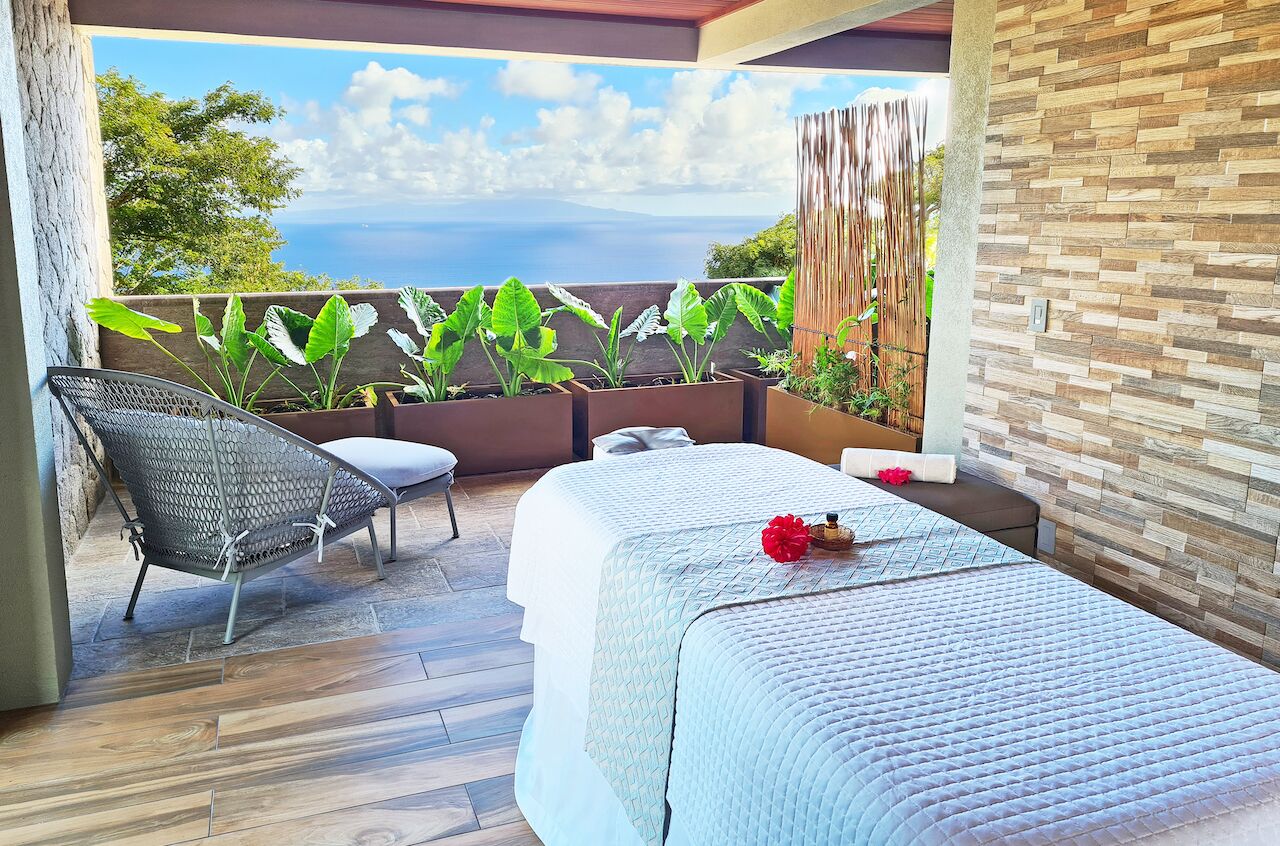Like most everything in Dominica, the road to Coulibri Ridge is rugged. It’s the sort of deep jungle terrain that spills drinks and jars joints, and is generally avoided by anyone with motion sickness.
This kind of ride is why one comes to Dominica, the Caribbean’s prime destination for untamed nature. And just as the sea of banana plants, elephant ears, and ferns seem like they’re going to swallow your car, they break away into a clearing. Between you and a view out over the glimmering waters of the Caribbean, you see a sign for Coulibri Ridge.
The sleek stone palace at the end of the jungle is possibly Dominica’s most heralded resort ever. Not just because it boasts amenities like private plunge pools, two-story penthouses, and high-speed WiFi. But because it has fused high-end luxury and sustainability like no project before it, on this island or any other. The resort took nearly two decades to complete, but the result is a 14-suite revolution in luxury travel.






